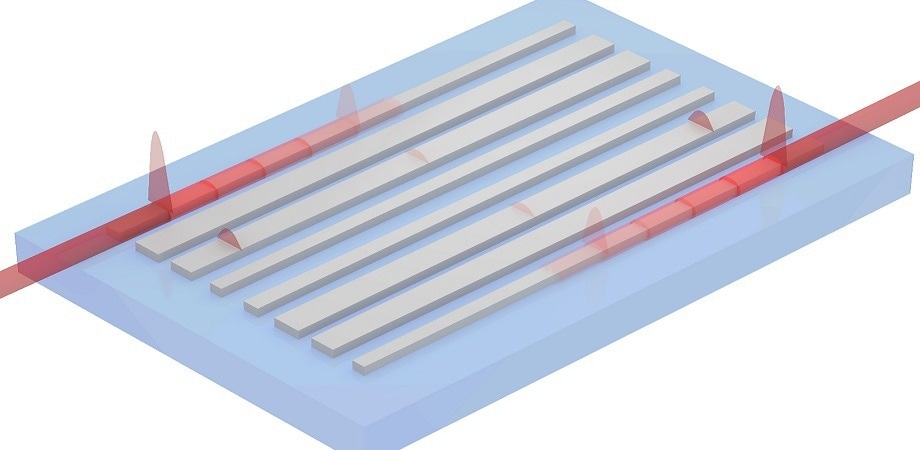Topology and nanophotonics have drawn a lot of attention because of the special qualities they possess. The study of topological edge states (TESs) is one area of concentration. Due to their high resistance to mistakes and flaws, these states have drawn a lot of attention.

Manipulating topological edge states for optical channel switcher. Image Credit: Bing-Cong Xu
TESs, which emerge from topologically challenging phases, offer an effective toolbox for designing the architectural layout of photonic integrated circuits.
TES transport has resulted in the discovery of several fascinating optical effects and applications, such as directional couplers, one-way waveguides, mode-locked waveguides, and pseudospin propagation in ring resonator arrays.
Recently, scientists have broadened their attempts to alter TESs by investigating approaches like adiabatic modulation, nonlinear effects, and complex braiding. Optical systems have revealed a variety of remarkable phenomena, including edge-to-edge topological transport and adjustable topological state localization.
For the advancement of cutting-edge technologies and applications, such as energy and information routing, nonlinear photonics, and quantum computing, these phenomena have enormous promise.
The interaction between TESs has not yet been given significant consideration by existing approaches, which concentrate on controlling TESs. The ability to interchange light energy across various regions of a topological lattice could be made possible by strengthening the coupling between TESs, which can help more precisely regulate the movement of TESs.
A team of scientists from the School of Optical and Electronic Information (OEI) at Huazhong University of Science and Technology (HUST) in China and the Wuhan National Laboratory for Optoelectronics (WNLO) in China has made a significant advancement.
They created a ground-breaking method to effectively manage TES transport for an optical channel switcher on a silicon-on-insulator (SOI) device, as published in Advanced Photonics. Their research employed the Landau-Zener (LZ) model to examine edge-to-edge channel conversion in a four-level waveguide lattice.
They developed a different, efficient, and dynamic way to regulate and control the movement of topological modes by making use of the finite-size effect in a two-unit-cell optical lattice.
The waveguide lattice they used is similar to a 2D material known as a Chern insulator, which is known to have TESs.
As the number of unit cells declines, the TESs develop according to the LZ model, and the researchers were able to dynamically control the TESs and achieve nearly perfect channel conversion by applying the LZ single-band evolution principle.
Topological LZ nanophotonic devices can be employed in a variety of different applications. They can be utilized as switches that operate at certain light wavelengths. It could be able to produce chiral channel conversions by adding LZ dynamics into various systems.
This approach can be extended to more complicated waveguide lattices, enabling even more sophisticated devices.
The researchers discovered that these topological LZ optical devices are highly resilient, which means that they can continue to function even when certain parameters are modified.
This opens the door to the development of practical devices like optical switches for routing networks on computer chips or devices that can combine or split numerous signals in a waveguide.
Journal Reference
Xu, B.-C., et al. (2023) Topological Landau–Zener nanophotonic circuits. Advanced Photonics. doi:10.1117/1.AP.5.3.036005.